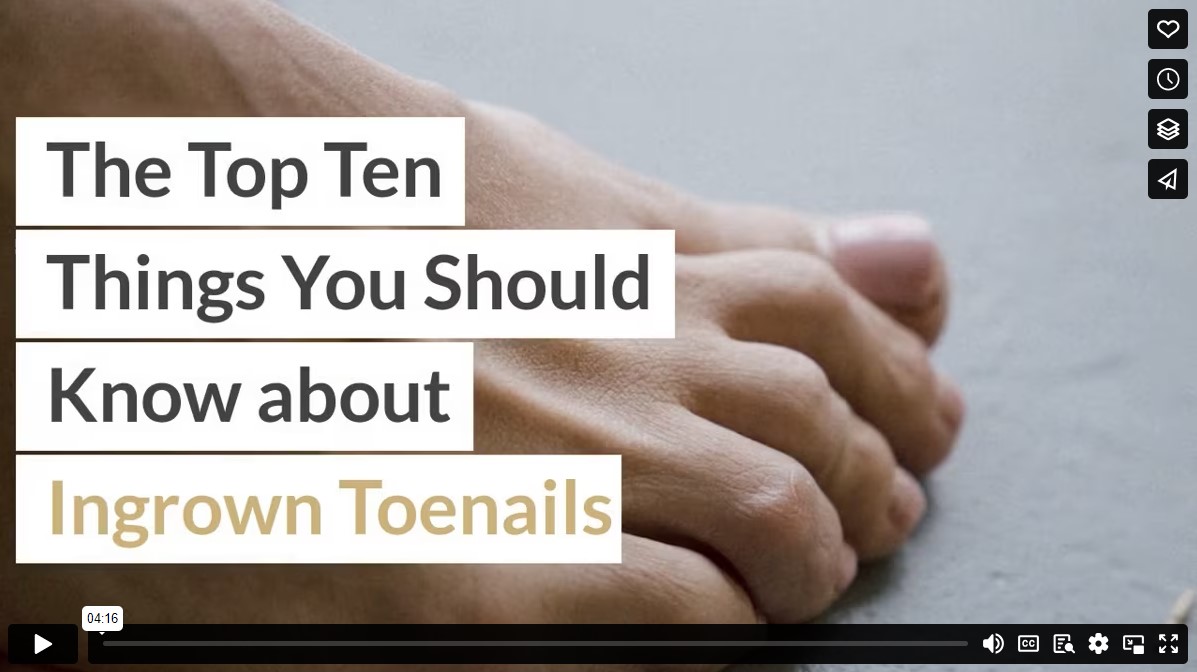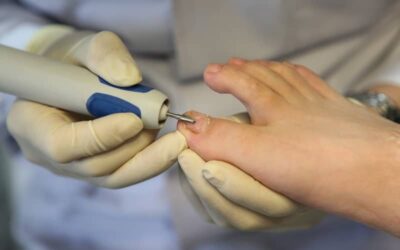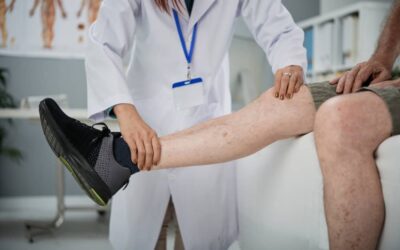Want to know what you can expect if you get an infected ingrown toenail? Curious about what you can do to prevent an ingrown toenail to begin with? Are you wondering what could happen if you just ignore that ingrown toenail?
The answers to these questions and more are here in this compilation of ingrown toenail facts.
1. Ingrown toenails are literally growing into the skin.
The name is not misleading at all. An ingrown toenail grows into the skin of the toe, and it is often accompanied by infection. And for the record, yes, it is as painful as it sounds.
2. Sometimes, ingrown toenails are preventable.
You can take steps to avoid ingrown toenails, including:
- Avoid moisture on your feet. Sweaty feet are more susceptible to ingrown toenails and infections.
- Don’t cut your toenails too short. Do, however, keep your nails neatly manicured. Try to cut your toenails straight across. Cutting your toenails too curved can accidentally train them to grow toward your toe.
- Wear correct-fitting shoes. Shoes that are too tight will compress your toes, pushing your nail into your skin. Shoes that are too loose will leave your foot bouncing around in them, unnecessarily and repeatedly hitting the sides.
- Practice good hygiene. Keeping your feet clean will help prevent any infections from taking root on your toes.
- Quit ballet. Okay, you don’t actually need to quit, but standing on your toes like that definitely isn’t doing your toenails any favors. The same goes for football, soccer, and any other activity that puts pressure on your toes.
- Wear steel-toed boots. Whenever you are doing something where your toes could potentially be crushed, choose protective footwear.
3. Sometimes, ingrown toenails are not preventable.
You can do all the right things, and you may still end up with an ingrown toenail. Some are genetic. If you inherited long toes from your grandpa or deeply curved toenails from your mom, you might just be more prone to ingrown toenails. Ingrown toenails can also occur after an accident or injury to your foot.
4. Ingrown nails don’t start out infected.
You may notice some redness, pain, and swelling around the nail bed of your toenail. This could be an ingrown toenail in the early stages.
5. Ingrown toenails can be treated at home if they are not infected.
If you catch an ingrown toenail early, you can start off on the right foot by treating it yourself. Your at-home treatment might include:
- Soaking your feet three times each day for 15 minutes each time. Afterward, dry them completely.
- Covering the toe with an antibiotic cream and then a bandage.
- Placing a small piece of cotton or dental floss in between your nail and the skin to help train the nail where it should grow.
- Treating the pain with over-the-counter pain relievers.
6. Infected ingrown toenails are bothersome.
If your ingrown toenail becomes infected, prepare yourself for oozing pus, throbbing pain, and an unpleasant odor.
7. If your toenail is infected, you should see a doctor.
Once an infection has developed, you should see a doctor for medical intervention. The doctor may suggest a couple of options:
- Partial nail removal is effective at alleviating your current ingrown toenail and preventing a new one from occurring 98% of the time.
- If a partial nail removal is unsuccessful, the doctor may recommend a matrix ectomy or complete removal of the toenail. This is sometimes necessary if the ingrown toenail is due to a thickening of your toenail.
8. Ignored ingrown toenails can lead to further complications.
It may seem like such a small part of your body it’s not worth worrying about. But ignoring an ingrown toenail can make it much worse. Untreated ingrown toenails can cause bone infections, foot ulcers, and gangrene (tissue decay).
9. If you have Type 2 diabetes or if you have Type 1 diabetes and have a difficult time managing your blood sugar, an infection can be very serious.
Your decreased blood flow can make the infection in your foot more dangerous for you than for someone without diabetes. If you suspect you have an ingrown toenail, don’t wait for an infection to pay a visit to your foot doctor.
10. You shouldn’t take your foot into your own hands.
If you suspect an infection in your ingrown toenail, don’t take a knife or other sharp object to the afflicted toe. You can unknowingly spread more infection. Let an experienced podiatrist handle ingrown toenails.
If you start experiencing pain from an ingrown toenail or any other part of your foot, let us help you. Schedule an appointment with us today.
Infographic
Are you puzzled about the signs and indications of an infected ingrown toenail? How can an ingrown toenail be hindered in the first place? The answers to these and other questions are provided in the section on ingrown toenails. Find out more if any portion of your foot, including an ingrown toenail, starts to hurt and make an appointment now.

Video




